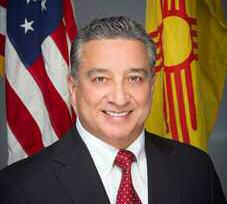More than a billion dollars from opioid lawsuit settlements are heading to New Mexico coffers, with some monies already hitting state and local government bank accounts. These funds represent a golden opportunity to mitigate the devastating impacts of the opioid epidemic—but making sure the money is spent the way it is intended is critical to ensuring that this opportunity and money aren’t wasted.
Opioids have taken a heavy toll on our State, claiming the lives of hundreds, shattering families and exacting long-term economic and social damage on communities. Companies that manufactured, sold, or distributed opioid painkillers will now pay $1 billion in lawsuit settlements to help remediate the havoc wreaked by these narcotics.
As a newly elected city councilor in Española in the early 2000s, I was taken aback when our police department became the first in the country to train officers in the intravenous administration of Narcan to help save overdose victims. Later, as mayor of Española—a city in a county with one of the highest heroin overdose rates in the U.S.—I witnessed firsthand as the opioid malignancy metastasized in my community as more lethal opioids became even more readily available in pill form. This epidemic is also personal to me, as I’ve lost friends and family members to opioid addiction.
These settlements represent a potentially lifesaving opportunity to gain ground against the opioid epidemic. It gives local stakeholders the ability to devise targeted strategies based on their circumstances, rather than a onesize- fits-all approach. For instance, communities know whether their funds are better suited for investments in life-saving medications like naloxone or to establish detox facilities.
New Mexico's leaders must act swiftly and collaboratively in developing a comprehensive strategy to utilize the settlement funds. Engagement with communities is paramount. Although the settlement payout is long-term, the initial planning and preparation will be key to effective and sustainable mitigation and prevention programs.
Per the settlement agreements, my office is tasked with ensuring that allocated funds are used for their intended purpose through our annual audits. If an audit reveals any misappropriation of these funds, that finding will preclude the local government from receiving further distributions until those funds are replaced. Participating governmental entities should review their policies and procedures to ensure appropriate levels of control over opioid settlement funds are in place before distribution. Consequently, my office has issued a risk advisory to outline my office’s role in this process to local governments and to the accountants auditing them.
New Mexico can and should be a model for addressing the devastating consequences of the opioid crisis. We can make significant strides in healing our communities and making them more resilient to emerging threats, like fentanyl. The settlement funds must be seen as an investment in the well-being and future of New Mexico, providing hope and support for individuals and communities battling addiction.
Transparency and accountability are crucial in ensuring that these settlement dollars fulfill their intended purpose. The scale of these settlements underscores the urgency and magnitude of the crisis at hand. As New Mexico’s chief financial watchdog, I embrace that urgency in making sure that every dollar is accounted for and spent in the effort to heal the wounds inflicted by the greed-fueled flood of opioids into our communities.

